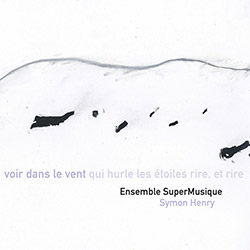
Montreal's true supergroup since 1998 with many of the city's essential Musique Actuelle performers and composers, directed by Danielle Palardy Roger and including Jean Derome, Joane Hetu, Scott Thomson, Lori Freedman, Alexander St. Onge, &c. &c., as they take on a piece by Quebec composer Symon Henry, performed in an exceptional concert in the Chapel in Bon-Pasteur.
Out of Stock.
Quantity in Basket: None
Log In to use our Wish List
Shipping Weight: 3.00 units
Sample The Album:
Joane Hetu-alto saxophone, objects
Jean Derome-alto saxophone, flutes, objects
Lori Freedman-clarinets
Scott Thomson-trombone
Guido Del Fabbro-violin
Pierre Yves Martel-Viola de Gambe, Cithare
Alexandre St-Onge-electric bass
Isaiah Ceccarelli-percussion
Guillaume Dostaler-piano
Remy Belanger de Beauport-violin cello
Danielle Palardy Roger-director
Symon Henry-composer
Click an artist name above to see in-stock items for that artist.
Includes an 8-page foldout with text in French and English and drawings from the score.
UPC: 771028125128
Label: Ambiances Magnetiques
Catalog ID: AM_251
Squidco Product Code: 28604
Format: CD
Condition: New
Released: 2020
Country: Canada
Packaging: Cardboard Gatefold
Recorded at the Chapel in Bon-Pasteur, Montreal, Canada, on November 9th, 2018, by John Klepko.
"This album was recorded live in concert as part of the exhibition of composer Symon Henry's graphic score "Voir dans le vent qui hurle les etoiles rire, et rire" at Chapelle historique du Bon-Pasteur in Montreal. This outstanding 168-page score, hand-drawn by the composer himself, was performed by ten improvisers from the Ensemble SuperMusique under the direction of Danielle Palardy Roger.
Each musician had to follow the score unfolding on his/her own iPad, while it was simultaneously projected on a screen for the audience to be seen. Divided into five movements followed by an Epilogue, this piece allows us, amongst other things, to visit a few "nuages d'etoiles" and "entrelacs", and a series of "formidables Nues". Referring to himself as a "sound draughtsman", musicians from ESM delicately play both the outlines of Symon Henry's drawings - whether they are thick or thin, pale or dark, straight or curved, - as well as all points making up the whole image... It is with great pleasure that the Ensemble SuperMusique has performed his graphic work."-Ambiances Magnetiques
"voir dans le vent qui hurle les étoiles rire et rire by Symon Henry already had a life. Created for the opening of the new Pavilion Lassonde at the Musée des Beaux-Arts du Québec by the Québec symphonic orchestra, it is under the arrangement of Danielle Palardy Roger for the ensemble Supermusique it has been recorded in 2018. The music of Symon Henry is particular by being partly improvised, their scores being drawn instead of being written with traditional notation. Curves, ascents and descents lines define the melody when the density of the traits and the colors define the orchestration and the volume of the sounds. The part of the musicians playing this music is then huge in the interpretation being done. But the listeners also have their voice in the interpretation of this music. Symon Henry writes (draws) their music as poetry, leaving space for diverse ways of understanding. Then, in order to review the listening I have done, you reader have to accept this is nothing more nothing less than my personal way of hearing this music. One between thousands.
The piece has six sections which will be played without stop. voir dans le vent qui hurle les étoiles rire et rire begins with Grandes horizontales et nuages d'étoiles. We can guess that these long horizontal lines will not touch each other, these lines, as unstable as they are, do not meet. This premiss is quite contemplative and ecstatic and express the impossibility of some connections, some communications. Les rencontres (meetings) happen in the second part. The straight lines are superposed to a clattering background from the strings and the piano. A solo by the cellist, took back by the saxophone shows a greater dramatic tension, what meetings and splittings sometimes also have. This movement ends on animals songs, those animals sounds like they are suffering, are breathless. With a transition at the cello -decidedly, Rémy Bélanger de Beauport hits it here- into the third part, Entrelacs et épurations, see the cello and the piano put down the marks for what will be following. After a stop in the flow, the sounds are shorter, sparser. Which brings to the almost death of this long breath that lead the piece from the very beginning. The fourth part, Accords et impulsions will be the catalyst for the end of the piece. The piano leads with a strong pointillism through Les nues. -we have here to define what " nues " means. In French it is a word frequently used in idioms without anyone knowing what it really means. It should be understood as the skies, cloudy or not, the clouds- On an almost dancing beat with a lot of pats is superposed huge descending glissandos, rocket ascending lines, exacerbated climaxes, ecstatic coitus. Here is the big earthquake, where everything happens. It ends on a plateau of high pitched strings and woodwinds, not coming back from their cloud until the end of the last section, Résonances. Once again, we hear long horizontal lines. The piano, the percussions and the cello are in the low of their respective register. Everything ends without having these extremes meet. Soaring each on their side, those lines live their grand ecstasy apart.
Until the end of the 20th Century, music mostly was an art of reproduction. Musicians damned to reproduce as well as they could what is a Beethoven sonata, what is a Bruckner Symphony, what is a Berg opera. Symon Henry, with many other composers writes a music which offers a lot of freedom to the performance, to the expression of views by the musicians-interpreters. They also leave a lot of space for the listener to hear, see and feel what the listener wants. I heard a lot of ecstasy, a lot of breath in voir dans le vent qui hurle les étoiles rire et rire. I feel some influences, maybe from Ligeti, Stockhausen or even Messiaen. But I am totally conscious that it is only one in a million ways to listen to this music. Other ensembles or orchestras will play eventually this work. The standard will be pretty high considering how this recording is very inspired and has a brilliant technical render. But those who will perform this music anew will give us eventually a pretty different version from this one. As in poetry, everything happens between the words, between the notes. The breath and the rests modify the meaning and embody the interpretation. This beautiful production is plural: it shows drawings, extracts from the score, of course this has a lot of music and also some poetry, as you can read the list of the titles as a haiku."-Symon Henry, Neomemoire
Includes an 8-page foldout with text in French and English and drawings from the score.
Get additional information at Neomemoire
Artist Biographies
• Show Bio for Joane Hetu "Joane Hétu. Born Montréal, Québec, 1958. Residence: Montréal, Québec. Composer, Performer (alto saxophone, voice), Author/ It has been more than 30 years now since self-taught composer, vocalist and saxophonist Joane Hétu has been following her own highly distinctive path through the vast territory of creative, contemporary music. From her beginnings with song-based new-rock bands such as Wondeur Brass, Justine and Les Poules, Hétu turned to composition (the evocative triptych comprising Musique d'hiver, Filature and La femme territoire ou 21 fragments d'humus) and improvisation, more often than not combining both within her general approach to music. She has co-directed the Ensemble SuperMusique since its founding in 1998, as well as the weekly series Mercredimusics since 2002. More recently she gave birth to La chorale bruitiste Joker (2012). Joane Hétu was awarded the prestigious Freddie Stone Award in 2006." ^ Hide Bio for Joane Hetu • Show Bio for Jean Derome "Jean Derome. Born Montréal, Québec, 1955. esidence: Montréal, Québec. Composer, Performer (saxophones (alto, baritone, soprano), flutes (flute, bass flute, piccolo, alto flute, recorders), keyboards, small wind instruments (ocarinas, jew's harp, game calls, toys...), percussion, invented instruments, voice) One of the most active and eclectic musicians on the Canadian creative music scene, Jean Derome has managed to earn the recognition of a larger public, a rare feat in that field. Thanks to his large-scale musique actuelle projects, his compositions, his work as an improviser, his jazz groups and his music for the screen and the stage, Derome ranks as a major creative force, in Québec and abroad. He is experienced and innovative on both saxophone and flute, and his unique writing style cannot be mistaken for anyone else's. Sensitive and powerful, his music often features a funny strike that makes its complex nature more inviting. Ever since Nébu (one of Québec's first avant-garde jazz groups) in the early '70s, Derome has been consistently renewing and diversifying his approach of composition. He impressed audience and critics first with the flute, then with the saxophone, as a lead character in the musique actuelle underground. He took part to the various artists' collectives looking for new ways to express themselves freely, without esthetic or social constraints, including the Ensemble de musique improvisée de Montréal. Later, in the early '80s, he co-founded Ambiances Magnétiques, a collective and record label that raised his profile at home and introduced his name to the outside world. Among his numerous projects, let us mention the duos Les Granules, Nous perçons les oreilles and Plinc! Plonc!, the dynamic group Jean Derome et les Dangereux Zhoms, and the large-scale projects Confitures de gagaku, Je me souviens - Hommage à Georges Perec and Canot-camping. Most of these projects are based on a unique form of synergy between composition, structured improvisation and genuine creative madness, all this articulated with unmatched playfulness. In 1992, Derome became the second artist to be presented with the Freddie Stone Award (bassist Lisle Ellis was the first). Besides improvising on a regular basis with Ambiances Magnétiques' members and appearing in their projects, Derome has also shared the stage with several musicians of international stature, among others Fred Frith, Lars Hollmer, Louis Sclavis and Han Bennink. He performs regularly all over Canada, in the US and in Europe. He received a Prix Opus in 2001 for his exposure abroad. Lately, jazz circles have been praising his undisputable qualities as a jazzman, thanks to the Thelonious Monk tribute project Évidence, the Normand Guilbeault Ensemble (whose Mingus Erectus CD is devoted to Charles Mingus' music), and the much-lauded Derome Guilbeault Tanguay Trio. Although Jean Derome writes tirelessly for his own projects, he is much in demand in the fields of film, theatre and dance. A short list of this side of his work would have to include his numerous scores for the National Film Board of Canada (NFB), especially for films by John Walker, Jacques Leduc, Fernand Bélanger and animated films by Pierre Hébert, Michèle Cournoyer and Jean Detheux; his incidental music for Théâtre UBU, Théâtre de Quat'Sous and Théâtre du Nouveau Monde; not forgetting his work with several top choreographers, including Louise Bédard, Andrew de Lotbinière Harwood, Daniel Soulières and Ginette Laurin. Other music ensembles have commissioned works from him, including Tuyo, Bradyworks, the Hard Rubber Orchestra from Vancouver and Fanfare Pourpour. Incidentally, Derome is the musical director of the latter. Over thirty years of music and 70 record credits later, Jean Derome still has sleeves bursting with tricks." ^ Hide Bio for Jean Derome • Show Bio for Lori Freedman "Lori Freedman. Born Toronto, Ontario, Canada, 1958. Residence: Montréal, Québec. Composer, Performer (clarinet, bass clarinet) Qualified as "a musical revolutionary in the front ranks of the avant-garde" by Alex Varty of the Georgia Straight (Vancouver), Lori Freedman (clarinets) is internationally recognized as one of the most creative and provocative performers. She is a member of a select group known as "renaissance musicians" as her artistic activities cover many fields: performer of written music (well over one hundred works have been written for or premiered by her), composer, improviser, teacher, and on occasion, writer. While managing a full performance schedule of more than 75 public appearances a year, Freedman has been receiving commissions to write music for ensembles such as Orkestra Futura, Arraymusic Ensemble, Ensemble Transmission, Continuum Contemporary Music Ensemble, Ensemble SuperMusique, Ensemble Paramirabo, Upstream Orchestra, Queen Mab Trio, Crowbar Trio, Lott Dance, Oberlander Films, Foresite Theatre, Cooke Productions and Autumn Leaf Productions. Her current discography comprises over 59 recordings, the most recent of which include Greffes (Empreintes digitales), On No (Mode Records), Bridge (Collection QB), Plumb (Barnyard Records), 3 and À un moment donné (Ambiances Magnétiques), Huskless! (Artifact), See Saw and Thin Air (Wig). Highlight collaborations include work with Rohan de Saram, Barre Phillips, Helmut Lachenmann, Frances-Marie Uitti, Monique Jean, Joëlle Léandre, Axel Dörner, George Lewis, the Jack Quartet and Richard Barrett." ^ Hide Bio for Lori Freedman • Show Bio for Scott Thomson "Scott Thomson is an improvising trombonist and composer. He works extensively with singer and dance artist, Susanna Hood, and writes songs for her based on published authors' texts to be played in many contexts, from duo to octet and sometimes including Susanna' s choreography. Monicker (with Arthur Bull and Roger Turner), for example, exemplifies Scott's commitment to open improvisation. He co-founded the Association of Improvising Musicians Toronto (AIMToronto) in 2004 and served as a director until 2009, and co- directed the AIMToronto Orchestra, formed for a project with Anthony Braxton in 2007. In 2016, he convened the Montreal-Toronto Art Orchestra to play Roscoe Mitchell's music. He founded Somewhere There, a Toronto creative music venue that hosted 850 concerts during his tenure, 2007-10. Scott has composed a series of site- specific works, "cartographic compositions" for mobile musicians and audiences in unconventional performance contexts including, notably, the National Gallery of Canada and the Art Gallery of Ontario. Scott programs the Guelph Jazz Festival." ^ Hide Bio for Scott Thomson • Show Bio for Guido Del Fabbro "Guido Del Fabbro. Born Montréal, Québec, 1980. Residence: Montréal, Québec. Composer, Performer (violin, electronics). Born in Montréal, 1980, Guido Del Fabbro started violin lessons at age four. His taste for improvisation and composition first manifested itself around 1990; since then, he has taken several classes and workshops related to these fields. Del Fabbro is co-founder, creator and composer of Mouvement de Musique Présente, a large ensemble of up-and-coming musicians devoted to scored and improvised music. He is also a member of the groups Fanfare Pourpour, Rouge ciel and Concorde Crash. For 18 months, he toured North America with Gilles Ste-Croix's horse circus Cheval-Théâtre. As a performer, he has recorded a few soundtracks for film, television, theatre and dance. As a composer, he has written music for choreographers Élodie Lombardo (Blou take two, Gelsomina) and Séverine Lombardo (Les Accords d'elles). Del Fabbro released his first solo album, Carré de sable, in 2003, on Ambiances Magnétiques. He can be heard on the latest albums by Tomás Jensen and Loco Locass. He is an accompanying multi-instrumentalist in Pierre Lapointe's show La forêt des mal-aimés." ^ Hide Bio for Guido Del Fabbro • Show Bio for Pierre Yves Martel "Following a unique artistic path, Pierre-Yves Martel is constantly renewing his musical identity and practice. Though an instrumentalist, he identifies himself first and foremost as a sound artist whose work oscillates between research and experimentation. It is in this spirit that he has revisited the viola da gamba, utilizing this traditional instrument in new contexts and thus reengaging it with the contemporary world. Having created an authentic musical language through non-conventional techniques and instrumental preparations, he also works outside of instrumental music altogether, using a variety of objects rife with new sonic possibilities, from contact-mics and speakers to motors, wheels, surfaces and textures. He lives in Montréal, Québec." ^ Hide Bio for Pierre Yves Martel • Show Bio for Alexandre St-Onge "Alexandre St-Onge. Born Montréal, Québec, 1976. Residence: Montréal, Québec. Composer, Performer (double bass). Alexandre St-Onge is an audio artist, a musician/improviser (acoustic bass, bass, voice and electronics) and a sound performer. He has studied literature and philosophy and he is currently doing his PhD in art. He is fascinated by creativity as a pragmatic approach of the ineffable and he has released seven solo CDs: Entités (Oral), Joseph Carey Merrick (Oral), Mon animal est possible (Alien8 Recordings), L'amitié ou les rumeurs insoutenables du désir (Squint Fucker Press), kasi naigo (Squint Fucker Press), Une mâchoire et deux trous (Namskéio Records), Image/négation (Alien8 Recordings). He also plays in quite a few bands, including Et Sans, K.A.N.T.N.A.G.A.N.O., Klaxon Gueule, Pink Saliva, Mineminemine, Shalabi Effect and Undo. As a composer he has worked for interactive/mixed-media company kondition pluriel, as well as composing for artists such as Marie Brassard, Karine Denault, Lynda Gaudreau, Line Nault, Jérémie Niel, Maryse Poulin and Mariko Tanabe." ^ Hide Bio for Alexandre St-Onge • Show Bio for Isaiah Ceccarelli "Isaiah Ceccarelli. Born Chetwynd, British Columbia, Canada, 1978. Residence: Montréal, Québec. Composer, Performer (drum set, percussion). Isaiah Ceccarelli is a drummer, improviser, and composer based in Montréal. His music has been qualified as "one of the most original approaches to come through our offices in recent times" (Marc Chénard, La Scena Musicale) and he has been described as possessing "a writing style with rare personality in this musical context" (Thierry Lepin, Jazzman Magazine). He participates in numerous creative music projects with Michel F Côté, Pierre-Yves Martel, Lori Freedman, Jean Derome, Bernard Falaise, Joshua Zubot and Philippe Lauzier, amongst others. He plays with Félix Stüssi and Ray Anderson, as well as with the Acadian singer Marie-Jo Thério. Proud ambassador of a new generation of creative musicians in Québec, his collaborations have led him on tour in Europe, North America, Asia and Australia. Isaiah has composed music for two of his own albums, Bréviaire d'épuisements and Lieux-dits (both on the Ambiances Magnétiques label), and for ensembles and musicians such as Quatuor Bozzini, Ensemble Allogène, the violist Jennifer Thiessen, and Ensemble Kô. He sings with the Schola Saint-Grégoire (Gregorian chant). A seasoned musician and composer, Isaiah Ceccarelli is, in the words of Charles Collard from La Scena Musicale, "a jewel in the crown of the Montréal scene and his presence is felt on several fronts at the same time." ^ Hide Bio for Isaiah Ceccarelli • Show Bio for Guillaume Dostaler "Guillaume Dostaler studied classical piano at the École de musique Vincent-d'Indy in Montréal. Since the beginning of the 1980s he has played in many jazz, musique actuelle, and funk groups with musicians drawn from both the local and the international scenes, such as Jean Derome, Michel Ratté, Yannick Rieu, Malcolm Goldstein, Butch Morris, Karen Young, and Greg Abatte. He took part in the performance of Nathalie Derome's Les 4 ronds sont allumés with René Lussier in 1999; in the same year he began playing with the rock/funk group Cosmik Débris. In 2000 he took part in the Les Moyens du Bord project with poet Patrice Desbiens and René Lussier as well as in Pierre Hébert's etching-on-film improvisation project. Since 2001 he has participated in René Lussier's Grand Vent project with François Chauvette, Maxime Lepage, Tom Walsh, and Lori Freedman and in the funk/techno group Rollan 77 with Benoît Charest, François Chauvette, and Maxime Lepage. He has also collaborated on music for films, plays, dance performances, and radio broadcasts and has taken part in a number of large-scale events. He can be heard on a number of compact discs." ^ Hide Bio for Guillaume Dostaler • Show Bio for Remy Belanger de Beauport "As a musician, Rémy Bélanger de Beauport is first and foremost a free-improv cellist. He plays piano for ballet classes, electric bass, guitar and drums for rock bands and vocals in different contexts. As a mathematician, he has taught college-level math. He also organizes events and gets himself involved in many causes. Originally from Québec City, Rémy's artistic practice as an experimental musician dates back to his teenage years. Influenced by Karlheinz Stockhausen and Nirvana, he publishes a first recording in 2003, with noise trio soda pop for a Déluge/Alterflow compilation. The same year, he releases an album as duo KL6 39E, on guitar, before switching over to the cello, starting the Fenaison trio with a first album on Ambiances Magnétiques in 2007. Since then, he has been active in many long and short term projects: as a singer in Ensemble Partiel, he performs Stimmung, by Karlheinz Stockhausen; as a free-improv cellist, he plays in Le Veau / The Veal on Cuchabata Records (Faire l'amour aux banques, 2015) and is regularly invited to play one-off concerts. As the cellist in GGRIL (an improvisers' orchestra based in Rimouski, Québec) he is heard on Combines (Tour de bras, 2015) and has performed in France and Italy as part of a European tour in 2016. While living in Belring in 2015-2016, he formed string trio THUYA with bass player Klaus Kürvers and violinist Gerhard Uebele (Live @ the CLUB, Creative Sources Recordings, 2016) and joined the Berlin Improvisers' Orchestra. He has recently released a flexidisc Angenehmer Duft on Kohlenstoff Records and a solo album D'éclisses on Ambiances Magnétiques. Rémy often works with dancers and choreographers, like Valerie Sabbah with whom he performs as Roméo & Juliette. He plays piano for ballet classes in various institutions such as L'École supérieure de ballet du Québec, L'École de danse de Québec and the Royal Academy of Dance, Berlin. For the Réseau d'enseignement de la danse, he composed and recorded, with percussionist Steve Hamel, music targeted for the teaching of Simonson Jazz dance in 2015. Rémy has participated in several festivals as a free-improv cellist, Festival international de musique actuelle in Victoriaville, Francofolies in Montréal, Festival international de la littérature in Montréal, Festival des musiques de créations in Saguenay-Lac-Saint-Jean, Rencontres de musiques spontanées in Rimouski, Kunst und Kultur Forum in Berlin. Rémy graduated in composition and music theory at McGill University, in mathematics at Université du Québec à Montréal and participates in improvisation masterclasses, perhaps more notably with Jean Derome, Lori Freedman, Fred Frith, Tristan Honsinger and Joëlle Léandre. He has earned scholarships and awards from McGill University in 2003, 2009 and 2010, the Coup de cœur SuperMusique in 2008 with Quintette de l'Halloween and the Prix culturel Rimouskois, pour la relève in 2013." ^ Hide Bio for Remy Belanger de Beauport • Show Bio for Danielle Palardy Roger "Danielle Palardy Roger. Born Laval, Québec, 1949. Residence: Montréal, Québec. Composer, Performer (drum set, electronic percussion, voice). Percussionist, composer and improviser Danielle Palardy Roger is for the most part self-taught. Active on the Montréal "musique actuelle" scene since 1980, she co-founded the groups Justine, Wondeur Brass and Les Poules. She also founded Ensemble SuperMusique, a shape-shifting ensemble solely devoted to the performance of new music works and improvisation. As a percussionist and improviser, her style is unique: she structures rhythm out of time, communicating a strong, complex narrative by accumulating and layering diverse gestures. She toured Canada, Europe and the United States on several occasions and appeared at several prestigious international events and festivals. In the course of her unique and resolutely independent career, she has worked and shared the stage with Alexei Borisov, DB Boyko, Christopher Butterfield, Nicolas Caloia, Paul Cram, Chantal Dumas, Christine Duncan, Lori Freedman, Fred Frith, Joëlle Léandre, Torsten Mueller, Zeena Parkins, Tenko, the VivaVoce choir, and the Quasar saxophone quartet, among others and in addition to her close collaborators from the Ambiances Magnétiques crowd - Derome, Hétu, Labrosse, Tanguay and Tétreault. Roger's research concerns the integration of improvisation to contemporary music. In that regard, she has worked with composer Marie Pelletier and composed music for the Ensemble Contemporain de Montréal and for Ensemble SuperMusique - the latter a shape shifting ensemble entirely dedicated to improvised music and "musique actuelle." She wrote a Harbour Symphony in 2001 (La grande entente), commissioned by the Musée Pointe-à-Callière in Montréal. Danielle Palardy Roger has made several albums for the Ambiances Magnétiques label, including Tricotage (2000) with French bassist Joëlle Léandre, Bruiducœur, prière des infidèles, an oratorio performed live in Montréal, in June of 2004, Phénix (2008) with the trio Les Poules, and Pas de deux (2008) with British guitarist Fred Frith. Roger is a versatile artist whose projects have consistently brought her back to text, song and declamation. She has penned a large number of songs for Wondeur Brass and Justine, but also composed a musical tale (L'oreille enflée, 1990), a musical theatre (Candide sur une toupie, 1994) and, most importantly, the solo performance Le voyage en Aphasie Mineure (1998) and the oratorio Bruiducœur, prières des infidèles (2004), two works where an exploding language represents the intense realm of communication, the core of the artist's concerns. In juxtaposition to her music career, Danielle Palardy Roger is also general manager and artistic director of Productions SuperMusique (PSM) and is a member of the Ambiances Magnétiques label; in addition to being involved in the field of concert music she is president of the Groupe Le Vivier, which is dedicated to the founding of a place of creation, production and presentation of new music in Montréal." ^ Hide Bio for Danielle Palardy Roger • Show Bio for Symon Henry "Symon Henry's artistic practice is based on the interaction between three major axes in their creations, namely concert music, visual arts and poetry. This transdisciplinary approach is particularly reflected in their graphic scores-instrumental or performative-which have been interpreted in North America, Europe and Asia by ensembles and soloists such as HSO-Stuttgart Symphony Orchestra, SurPlus Ensemble, Nouvel Ensemble Moderne, Joseph Petric and Kasia Kadlubowska. Their first collection of poetry, son corps parlait pour ne pas mourir, as well as their first art book of graphic scores, voir dans le vent qui hurle les étoiles rire, et rire, were published in 2016 at Éditions de la Tournure. Their visual art work has been exhibited at Gham & Dafe, Livart, Maison de la culture du Plateau-Mont-Royal, Chapelle historique du Bon-Pasteur, and at the Palazzo Ducale di Lucca. Their work voir dans le vent qui hurle les étoiles rire, et rire, a 40-minutes piece co-composed with Yannick Plamondon for the Orchestre Symphonique de Québec and marimbist Anne-Julie Caron, was performed in September 2016 to celebrate the inauguration of the new Lassonde pavilion of the Musée national des beaux-arts du Québec. Symon is Génération2016 laureate and has taken part in the Ensemble contemporain de Montréal Canadian tour. Symon is also an independent researcher: his writings have been published on many platforms, including the Revue Circuit, the Cahiers de la SQRM, the cetvilleetrange.org website and the Ecosystem magazine of the Chambre Blanche. They are a frequent guest speaker, as a composer and researcher, including at McGill University, Simon Fraser University, Western University, Université de Montréal, Université du Québec à Montréal and at the various Conservatoires de musique in Québec." ^ Hide Bio for Symon Henry
7/9/2025
Have a better biography or biography source? Please Contact Us so that we can update this biography.
7/9/2025
Have a better biography or biography source? Please Contact Us so that we can update this biography.
7/9/2025
Have a better biography or biography source? Please Contact Us so that we can update this biography.
7/9/2025
Have a better biography or biography source? Please Contact Us so that we can update this biography.
7/9/2025
Have a better biography or biography source? Please Contact Us so that we can update this biography.
7/9/2025
Have a better biography or biography source? Please Contact Us so that we can update this biography.
7/9/2025
Have a better biography or biography source? Please Contact Us so that we can update this biography.
7/9/2025
Have a better biography or biography source? Please Contact Us so that we can update this biography.
7/9/2025
Have a better biography or biography source? Please Contact Us so that we can update this biography.
7/9/2025
Have a better biography or biography source? Please Contact Us so that we can update this biography.
7/9/2025
Have a better biography or biography source? Please Contact Us so that we can update this biography.
7/9/2025
Have a better biography or biography source? Please Contact Us so that we can update this biography.
Track Listing:
1. I. Grandes Horizontales Et Nuages D'etoiles (Premisses) 12:29
2. II. Rencontres (Sur Fond De Grandes Horizontales) 9:37
3. III. Entrelacs Et Epuration 6:30
4. IV. Accords Et Impulsions 7:42
5. V. Les Nues (Autoportraits En Liesse) 10:22
6. VI. Resonances (Grandes Horizontales II) 4:52
Ambiances Magnetiques
Improvised Music
Free Improvisation
Jazz
Musique Actuelle
Large Ensembles
Jean Derome
Hetu, Joane
Canadian Composition & Improvisation
Staff Picks & Recommended Items
Search for other titles on the label:
Ambiances Magnetiques.


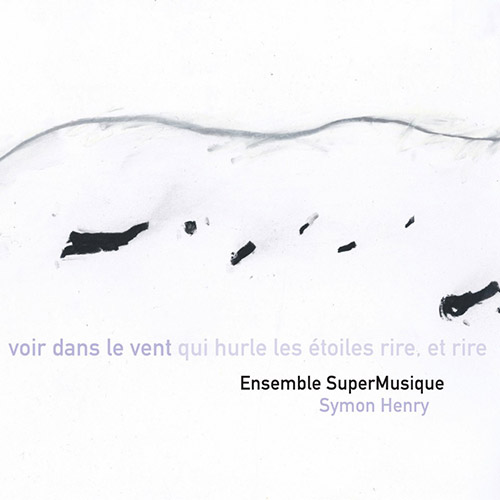

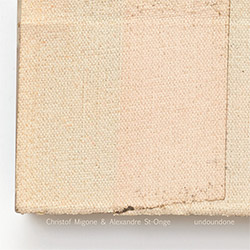



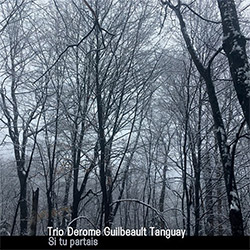






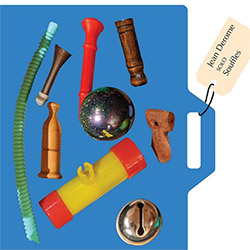
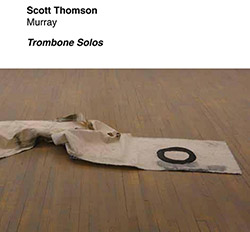


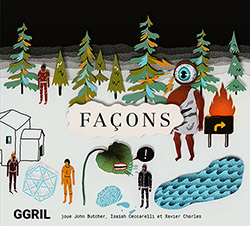
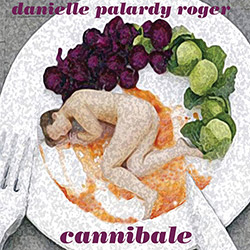
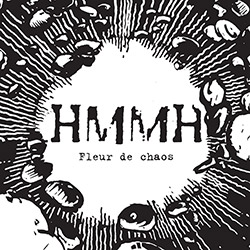



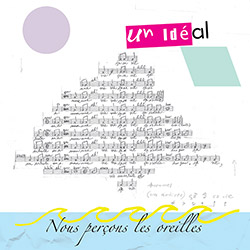

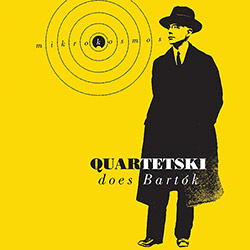
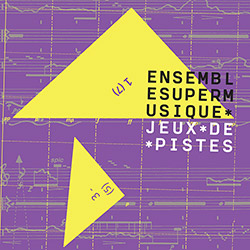



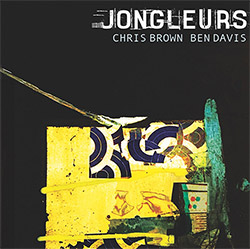
![BlueRing Improvisers: Materia [2 CDs]](https://www.teuthida.com/productImages/misc4/36513.jpg)




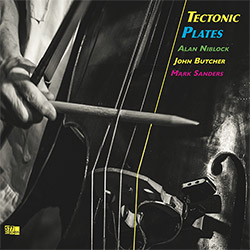


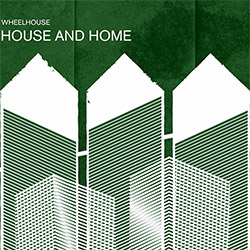
![Wheelhouse (Rempis / Adasiewicz / McBride): House And Home [VINYL]](https://www.teuthida.com/productImages/misc4/36462.jpg)
![+DOG+: The Light Of Our Lives [2 CDs]](https://www.teuthida.com/productImages/misc4/36009.jpg)


![Parker, Evan / Jean-Marc Foussat: Insolence [VINYL]](https://www.teuthida.com/productImages/misc4/36398.jpg)










![Deupree, Jerome / Sylvie Courvoisier / Lester St. Louis / Joe Morris: Canyon [2 CDs]](https://www.teuthida.com/productImages/misc4/36404.jpg)



![Eventless Plot | Haarvol: The Subliminal Paths [CASSETTE + DOWNLOAD]](https://www.teuthida.com/productImages/misc4/36232.jpg)










![Eventless Plot | Francesco Covarino: Methexis [CASSETTE + DOWNLOAD]](https://www.teuthida.com/productImages/misc4/36231.jpg)



![Das B (Mazen Kerbaj / Mike Majkowski / Magda Mayas / Tony Buck): Love [VINYL]](https://www.teuthida.com/productImages/misc4/36329.jpg)


![Eternities: Rides Again [CASSETTE]](https://www.teuthida.com/productImages/misc4/36247.jpg)
![Lopez, Francisco: Untitled (2021-2022) [2 CDs]](https://www.teuthida.com/productImages/misc4/36438.jpg)






![Money : Money 2 [2 CDs]](https://www.teuthida.com/productImages/misc4/35894.jpg)




![Klinga, Erik: Elusive Shimmer [VINYL]](https://www.teuthida.com/productImages/misc4/36258.jpg)
![CHANGES TO blind (Phil Zampino): Volume 9 - I Wave on a Fine Vile Mist [CD + DOWNLOAD]](https://www.teuthida.com/productImages/misc4/36061.jpg)

![Wallmart / Rubbish: Asset Protection [split CD]](https://www.teuthida.com/productImages/misc4/35900.jpg)


![+Dog+: The Family Music Book Vol. 5 [2 CDs]](https://www.teuthida.com/productImages/misc4/35897.jpg)
![Kuvveti, Deli : Kuslar Soyledi [CASSETTE w/ DOWNLOAD]](https://www.teuthida.com/productImages/misc4/36107.jpg)

![Brown, Dan / Dan Reynolds: Live At The Grange Hall [unauthorized][CASSETTE]](https://www.teuthida.com/productImages/misc4/36245.jpg)








![Palestine, Charlemagne / Seppe Gebruers: Beyondddddd The Notessssss [VINYL]](https://www.teuthida.com/productImages/misc4/36206.jpg)
![Palestine, Charlemagne / Seppe Gebruers: Beyondddddd The Notessssss [NEON GREEN VINYL]](https://www.teuthida.com/productImages/misc4/36207.jpg)

![Laubrock, Ingrid: Purposing The Air [2 CDs]](https://www.teuthida.com/productImages/misc4/35639.jpg)

![Yoko, Ono / The Great Learning Orchestra: Selected Recordings From Grapefruit [2 CDs]](https://www.teuthida.com/productImages/misc4/35841.jpg)









![Zorn, John / JACK Quartet: The Complete String Quartets [2 CDs]](https://www.teuthida.com/productImages/misc4/35609.jpg)

![Lonsdale, Eden: Dawnings [2 CDs]](https://www.teuthida.com/productImages/misc4/35480.jpg)



![Sorry For Laughing (G. Whitlow / M. Bates / Dave-Id / E. Ka-Spel): Rain Flowers [2 CDS]](https://www.teuthida.com/productImages/misc4/35985.jpg)

![Rolando, Tommaso / Andy Moor : Biscotti [CASSETTE w/ DOWNLOADS]](https://www.teuthida.com/productImages/misc4/36106.jpg)


![Electric Bird Noise / Derek Roddy: 8-10-22 [CD EP]](https://www.teuthida.com/productImages/misc4/35970.jpg)








![Elephant9 : Mythical River [VINYL]](https://www.teuthida.com/productImages/misc4/34624.jpg)



![Elephant9 with Terje Rypdal: Catching Fire [VINYL 2 LPs]](https://www.teuthida.com/productImages/misc4/35355.jpg)
![Deerlady (Obomsawin, Mali / Magdalena Abrego): Greatest Hits [VINYL]](https://www.teuthida.com/productImages/misc4/34876.jpg)







![Surplus 1980: Illusion of Consistency [CD]](https://www.teuthida.com/productImages/misc4/35069.jpg)
![Staiano, Moe: Away Towards the Light [VINYL + DOWNLOAD]](https://www.teuthida.com/productImages/misc4/35037.jpg)
![Coley, Byron: Dating Tips for Touring Bands [VINYL]](https://www.teuthida.com/productImages/misc4/17906.jpg)

![Lost Kisses: My Life is Sad & Funny [DVD]](https://www.teuthida.com/productImages/misc4/lostKissesDVD.jpg)